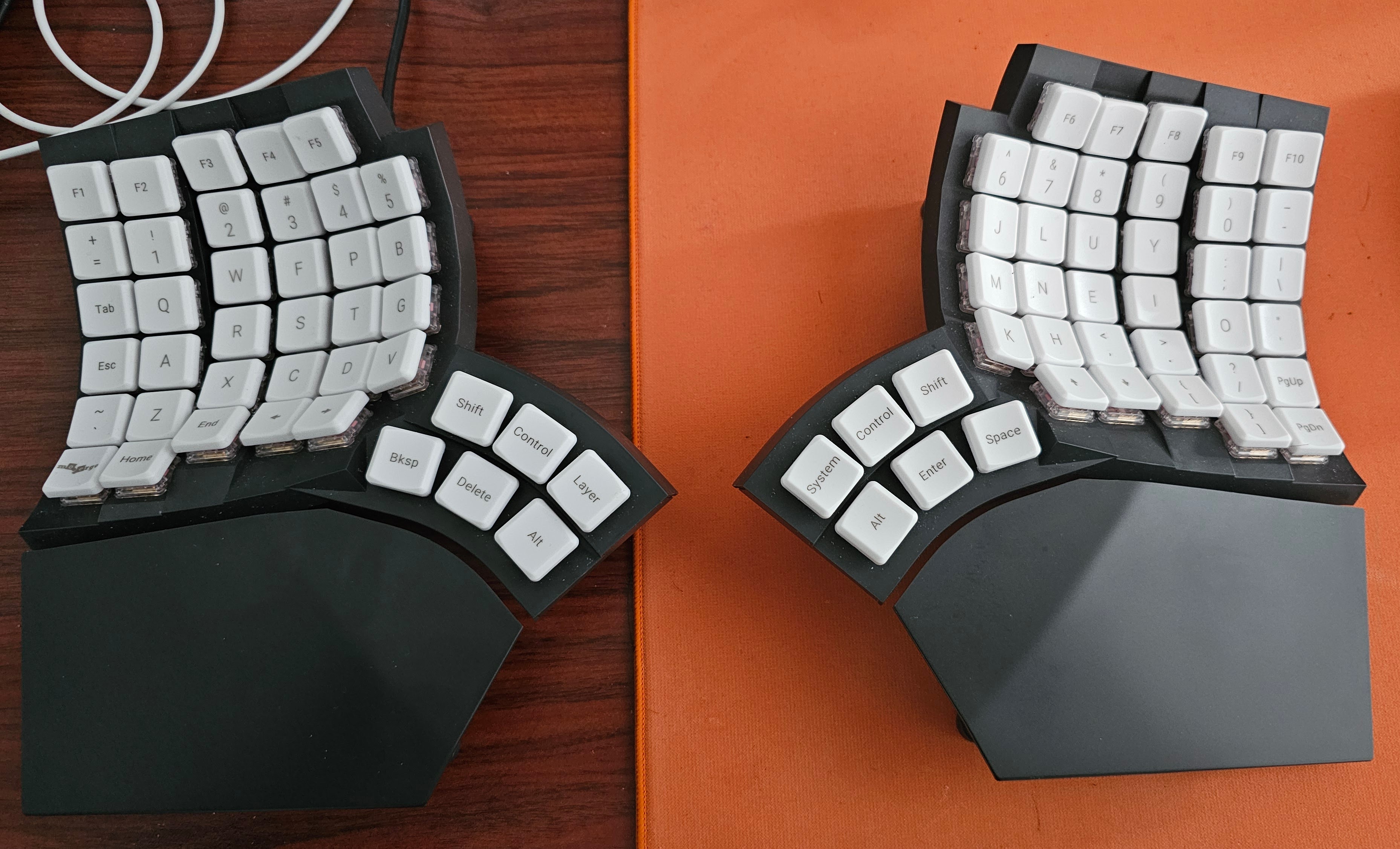For 2025, one of my goals was to write a screenplay for a feature film. However, I quickly realized I had an unexpected obstacle: my typing speed. I imagine that a truly inspired writer would power through and just dictate the script or write it on the phone or iPad. As a chronic procrastinator, I of course decided to delay my writing project by getting my typing up to speed first. The culprit of my poor WPM is my split keyboard, which I bought in late December after spilling a protein shake on my trusty 60% mechanical keyboard.
Specifically, I upgraded to the MoErgo Glove80, which I really cannot recommend enough to anyone whose day job is mostly writing code. The transition from staggered to ortholinear is mostly trivial and the switch to a split layout is an ergonomic improvement with no noticeable drawbacks. The breaking change was a decision to switch my keyboard layout for fun. Colemak-DH seemed like a cool and efficient layout, according to random online forum discussion…how hard could it be? I severely underestimated how dependent I was on QWERTY. Two decades of heavy computer use will do that. Going from typing at 120 WPM to 20 WPM was a humbling experience. I play the piano as a hobby and sightreading doesn’t feel too many steps away from touch typing so I figured getting faster might be easier for me than most.
By far the most difficult speed hurdle was memorizing the new key locations, which feels to me like holding a visualization of a keyboard in my head. The letter E was initially quite hard because it moved from the left hand to the right, while the letter S proved challenging as well because it only shifted one place over. Still by practicing common bigrams and trigrams, eventually these keys were committed to memory. Outside of my nightly 15-20 minute training sessions, I also gained plenty of practice writing in Python at work, which forced me to learn to use underscores, brackets, numbers, and all sorts of special characters more quickly. Luckily I somehow managed to dodge all potentially embarassing scenarios involving typing while screen sharing. In my free time, I started to raise my speed on individual keys through focused practice on keybr.com. Typing speed no longer became a huge productivity killer at work. But still, after a month, I still have yet to crack 100 WPM.
For the long weekend in February, I visited home and made a startling discovery when decided to show my Dad a few things on his computer: QWERTY wasn’t as deeply engraved into my brain as I thought it was. Faced with a standard keyboard, I struggled to type and made an error on every other word. Knowing two layouts and not being good at either is uniquely frustrating. Thus, the journey to return to 120 WPM commences - wish me luck!
